-
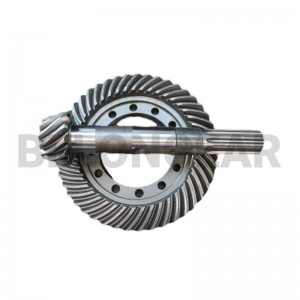
Spiral Bevel Gear with splines on shaft
Crafted for optimal performance across diverse applications, our Spline-Integrated Bevel Gear excels in delivering reliable power transmission in industries ranging from automotive to aerospace. Its robust construction and precise tooth profiles guarantee unparalleled durability and efficiency, even in the most demanding environments.
-
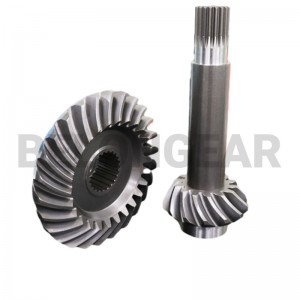
Spiral Bevel Gear and Spline Combo
Experience the epitome of precision engineering with our Bevel Gear and Spline Combo. This innovative solution combines the strength and reliability of bevel gears with the versatility and precision of spline technology. Engineered to perfection, this combo seamlessly integrates the spline interface into the bevel gear design, ensuring optimal power transmission with minimal energy loss.
-
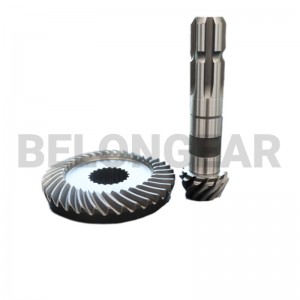
Precision Spline Driven Bevel Gear Gearing Drives
Our spline driven bevel gear offers a seamless integration of spline technology with precision-engineered bevel gears, providing optimal efficiency and control in motion transmission applications. Designed for seamless compatibility and smooth operation, this gear system ensures precise motion control with minimal friction and backlash. Ideal for applications where precision and efficiency are paramount, our spline driven bevel gear delivers reliable performance and unmatched durability, making it the top choice for demanding mechanical systems.
-
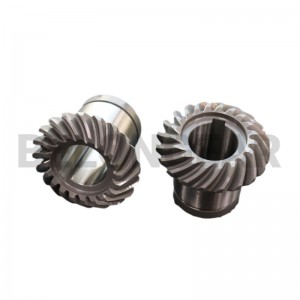
spiral gear special special manufacturers
Providing customized gear manufacturing and precision machining services, we focus on tailored solutions for mechanical power transmission components. With over a decade of experience, we offer customized services from prototyping to full-scale production. We serve various industries including aerospace, defense, medical, commercial oil, power, and automotive, manufacturing precision parts. We utilize automation and CNC technology to streamline production, reduce costs, and enhance accuracy. We provide precision CNC-machined gears, including helical and spur gears, as well as other types of gears such as pump gears, bevel gears, and worm gears.
-
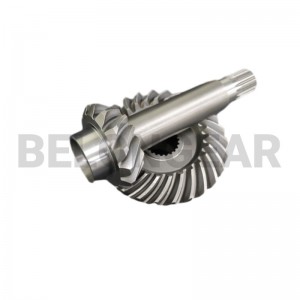
spiral miter gears for advantages
Spiral miter gears are used in situations that require a change in the direction of transmission. They are capable of handling heavier loads and can operate at higher speeds. In conveyor belt systems that necessitate both power transmission and a change in direction, these gears can provide an efficient drive. They are also a good choice for heavy machinery that demands high torque and durability. Due to their gear tooth design, these gears maintain contact for a longer period during meshing, which results in quieter operation and smoother power transmission.
-
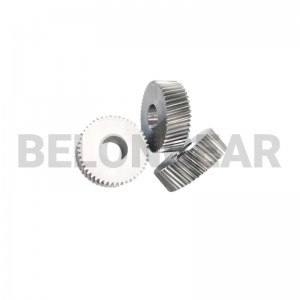
Helical gear used in gearbox
Custom OEM helical gear used in gearbox, In a helical gearbox, helical spur gears are a fundamental component. Here’s a breakdown of these gears and their role in a helical gearbox:- Helical Gears: Helical gears are cylindrical gears with teeth that are cut at an angle to the gear axis. This angle creates a helix shape along the tooth profile, hence the name “helical.” Helical gears transmit motion and power between parallel or intersecting shafts with smooth and continuous engagement of the teeth. The helix angle allows for gradual tooth engagement, resulting in less noise and vibration compared to straight-cut spur gears.
- Spur Gears: Spur gears are the simplest type of gears, with teeth that are straight and parallel to the gear axis. They transmit motion and power between parallel shafts and are known for their simplicity and effectiveness in transferring rotational motion. However, they can produce more noise and vibration compared to helical gears due to the sudden engagement of teeth.
-
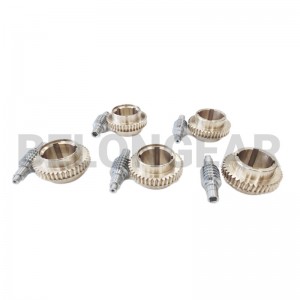
Bronze Worm Gear and Worm Wheel In Worm Gearboxes
Worm gears and worm wheels are essential components in worm gearboxes, which are types of gear systems used for speed reduction and torque multiplication. Let’s break down each component:
- Worm Gear: The worm gear, also known as the worm screw, is a cylindrical gear with a spiral thread that meshes with the teeth of the worm wheel. The worm gear is typically the driving component in the gearbox. It resembles a screw or a worm, hence the name. The angle of the thread on the worm determines the gear ratio of the system.
- Worm Wheel: The worm wheel, also called the worm gear or worm gear wheel, is a toothed gear that meshes with the worm gear. It resembles a traditional spur or helical gear but with teeth arranged in a concave shape to match the contour of the worm. The worm wheel is usually the driven component in the gearbox. Its teeth are designed to engage smoothly with the worm gear, transmitting motion and power efficiently.
-
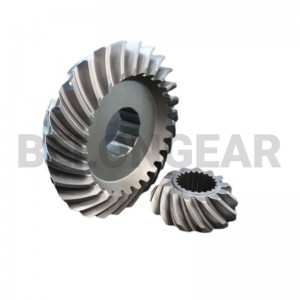
Industrial Hardened Steel Pitch Left Right Hand Steel Bevel Gear
Bevel Gears We select steel renowned for its robust compression strength to match specific performance requirements. Leveraging advanced German software and the expertise of our seasoned engineers, we design products with meticulously calculated dimensions for superior performance. Our commitment to customization means tailoring products to meet the unique needs of our customers, ensuring optimal gear performance across diverse working conditions. Every step of our manufacturing process undergoes rigorous quality assurance measures, guaranteeing that product quality remains fully controllable and consistently high.
-
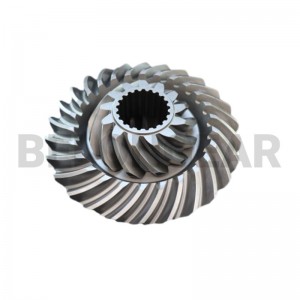
Helical Bevel Gearcs Spiral Gearing
Distinguished by their compact and structurally optimized gear housing, helical bevel gears are crafted with precision machining on all sides. This meticulous machining ensures not only a sleek and streamlined appearance but also versatility in mounting options and adaptability for various applications.
-
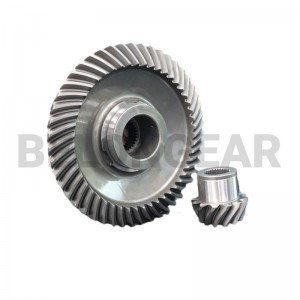
China ISO9001Toothed Wheel Gleason Ground Auto Axle Spiral Bevel Gears
Spiral bevel gears are meticulously crafted from top-tier alloy steel variants like AISI 8620 or 9310, ensuring optimal strength and durability. Manufacturers tailor the precision of these gears to suit specific applications. While industrial AGMA quality grades 8-14 suffice for most uses, demanding applications may necessitate even higher grades. The manufacturing process encompasses various stages, including cutting blanks from bars or forged components, machining teeth with precision, heat treating for enhanced durability, and meticulous grinding and quality testing. Widely employed in applications such as transmissions and heavy equipment differentials, these gears excel in transmitting power reliably and efficiently.
-
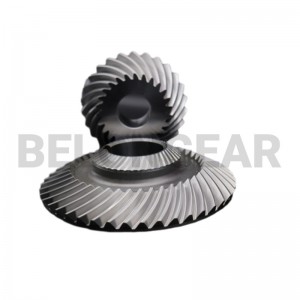
Spiral Bevel Gear Manufacturers
Our industrial spiral bevel gear boasts enhanced features, gears gear including high contact strength and zero sideways force exertion. With an enduring life cycle and resistance to wear and tear, these helical gears are the epitome of reliability. Crafted through a meticulous manufacturing process using high-grade alloy steel, we ensure exceptional quality and performance. Custom specifications for dimensions are available to meet our customers’ exact needs.
-

High precision cylindrical spur gear set used in aviation
High precision cylindrical gear sets used in aviation are engineered to meet the demanding requirements of aircraft operation, providing reliable and efficient power transmission in critical systems while maintaining safety and performance standards.
High precision cylindrical gears in aviation are typically made from high-strength materials such as alloy steels, stainless steels, or advanced materials like titanium alloys.
The manufacturing process involves precision machining techniques such as hobbing, shaping, grinding, and shaving to achieve tight tolerances and high surface finish requirements.




